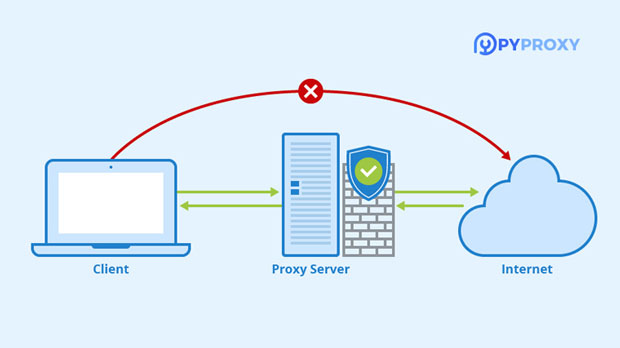When it comes to configuring a socks5 proxy, the process can vary significantly between mobile devices and PC platforms. While both offer similar functionalities, the way they are accessed and set up can differ based on the operating system and the available software tools. The usage of Socks5 on a mobile device often involves more constraints in terms of app-based configurations, whereas PCs typically have broader options through both native and third-party software. This article will explore the distinctions between configuring socks5 proxies on mobile and PC devices, highlighting key differences in setup, performance, and usability for each platform. 1. Overview of Socks5 Proxy ConfigurationSocks5 proxies provide a high level of privacy and anonymity by acting as an intermediary server between the user's device and the internet. Unlike traditional proxies, Socks5 supports a wide range of internet protocols, making it ideal for applications requiring flexibility, such as browsing, streaming, and even P2P file sharing. Setting up a Socks5 proxy is essential for those looking to obscure their IP address or access geo-restricted content, but the setup process differs based on whether the device is a mobile phone or a PC.2. Configuration on Mobile Devices2.1. Mobile Operating Systems and AppsOn mobile devices, users primarily rely on apps or built-in settings to configure a Socks5 proxy. Mobile platforms like Android and iOS typically provide limited native support for proxy settings, which can make the process slightly more complicated. For instance, Android devices allow users to set up Socks5 through Wi-Fi network settings, but this can only be done for the active network. Any change in Wi-Fi networks would require reconfiguration. On iOS, the process is even more restrictive, as users can only apply proxy settings for Wi-Fi connections and must use third-party apps for other types of connectivity, such as cellular networks.2.2. Limited Control and RestrictionsA significant difference between mobile and PC platforms is the limited control users have over their proxy configuration on mobile devices. On mobile phones, users often have fewer customization options when configuring Socks5 proxies. For example, certain mobile apps might allow users to change the proxy server or port but may not support advanced configurations such as authentication, DNS handling, or traffic filtering. Additionally, mobile operating systems tend to limit certain functionalities for security reasons, meaning users may not have the flexibility they would expect in a desktop environment.2.3. Mobile Apps for Socks5 ConfigurationA variety of mobile apps on both Android and iOS allow users to configure Socks5 proxies easily. These apps typically provide a more user-friendly interface, streamlining the setup process. However, the reliance on third-party apps for full proxy functionality means users may have to trust the developers of these apps, which can raise concerns about privacy and data security. Furthermore, mobile devices are often limited in processing power and memory, which can impact the performance of Socks5 proxies on mobile.3. Configuration on PC Devices3.1. Greater Flexibility and ControlOn a PC, the configuration process for a Socks5 proxy offers much greater flexibility and control. Whether using Windows, macOS, or Linux, users can configure Socks5 proxies in both system settings and within individual applications. Operating systems like Windows and macOS have built-in options to configure Socks5 proxy settings in the network settings. This allows the proxy to be applied across the entire system, impacting all applications that use the internet. Additionally, advanced configuration options such as DNS settings, authentication credentials, and connection encryption are more accessible on PCs, providing users with a higher degree of customization.3.2. Proxy Software on PCsFor users who require more advanced features, third-party proxy software on PCs provides additional tools to optimize and manage the Socks5 connection. These applications often offer enhanced capabilities such as proxy rotation, multiple server support, and automatic failover, which are not typically available on mobile platforms. Moreover, users can install browser extensions, such as those for Chrome or Firefox, to selectively apply Socks5 proxies for specific browsing sessions. These software solutions allow for detailed management of the proxy service, offering more robust functionalities than mobile apps.3.3. Improved Performance and StabilityPCs, particularly those with higher processing power and larger memory capacities, provide a better environment for running Socks5 proxies. The performance of these proxies tends to be more stable on a PC, as the operating systems are optimized for handling multiple connections simultaneously. In contrast, mobile devices often struggle with managing resource-intensive tasks, especially when dealing with multiple simultaneous proxy connections. Furthermore, a PC’s ability to connect to higher-speed internet connections and maintain stable network access ensures that the Socks5 proxy performs at a higher standard, making it more suitable for tasks that demand reliability, such as online gaming, streaming, or large file transfers.4. Key Differences in User Experience4.1. Ease of UseOn mobile devices, the ease of use largely depends on the app or settings available to the user. While apps may provide a straightforward configuration interface, there is still a learning curve involved, especially for users who are not familiar with network settings. On the other hand, PC users generally experience a smoother process due to more extensive support for Socks5 configurations at both the system level and application level. The options available to PC users, including browser integrations and third-party software, make the process more intuitive for experienced users.4.2. Security ConsiderationsSecurity concerns can vary based on the platform. While both mobile and PC configurations can be secure, mobile devices are generally more vulnerable to attacks due to the nature of their connectivity, especially when using public networks. On the other hand, PC devices can benefit from stronger security configurations, such as firewalls and antivirus software, which offer an additional layer of protection when using Socks5 proxies.5. ConclusionThe process of configuring a Socks5 proxy differs significantly between mobile and PC platforms. Mobile devices, while offering portability and ease of access, come with limitations in terms of customization and control. PCs, on the other hand, provide users with a higher degree of flexibility, better performance, and more options for advanced configuration. Ultimately, the choice between mobile and PC platforms depends on the user’s specific needs, level of expertise, and the tasks they plan to perform with the proxy. Both platforms have their strengths, and understanding the distinctions between them can help users make an informed decision when setting up a Socks5 proxy.
Jan 14, 2025




























































